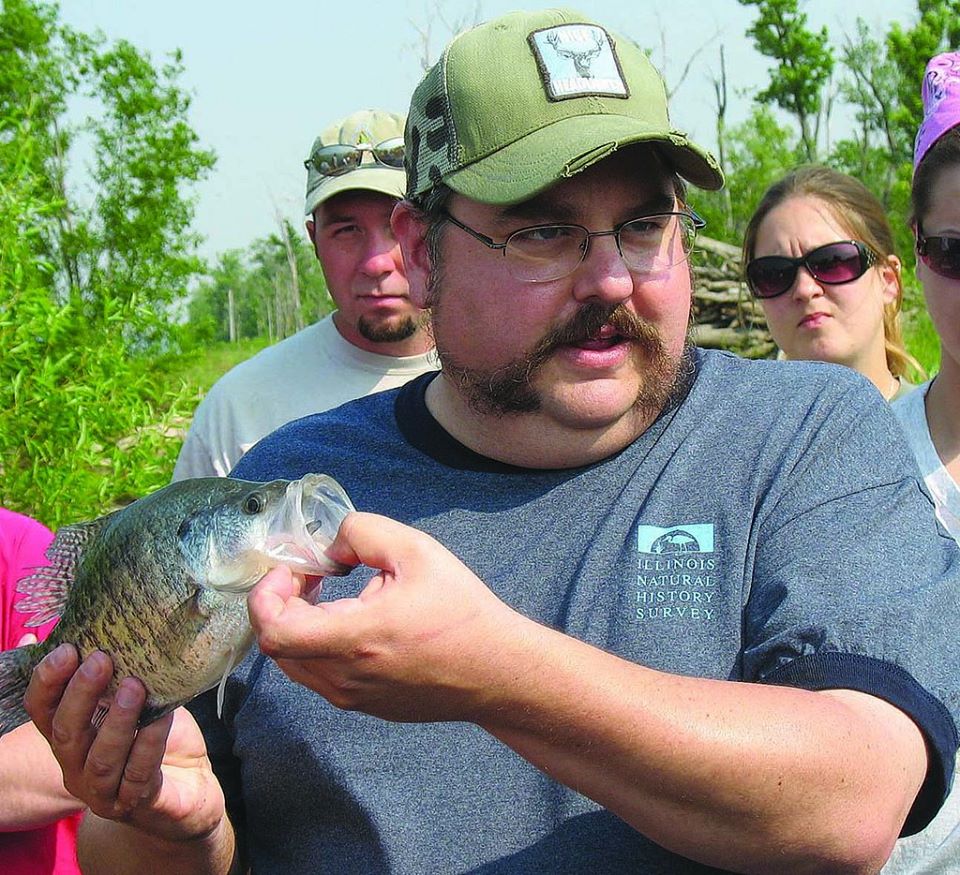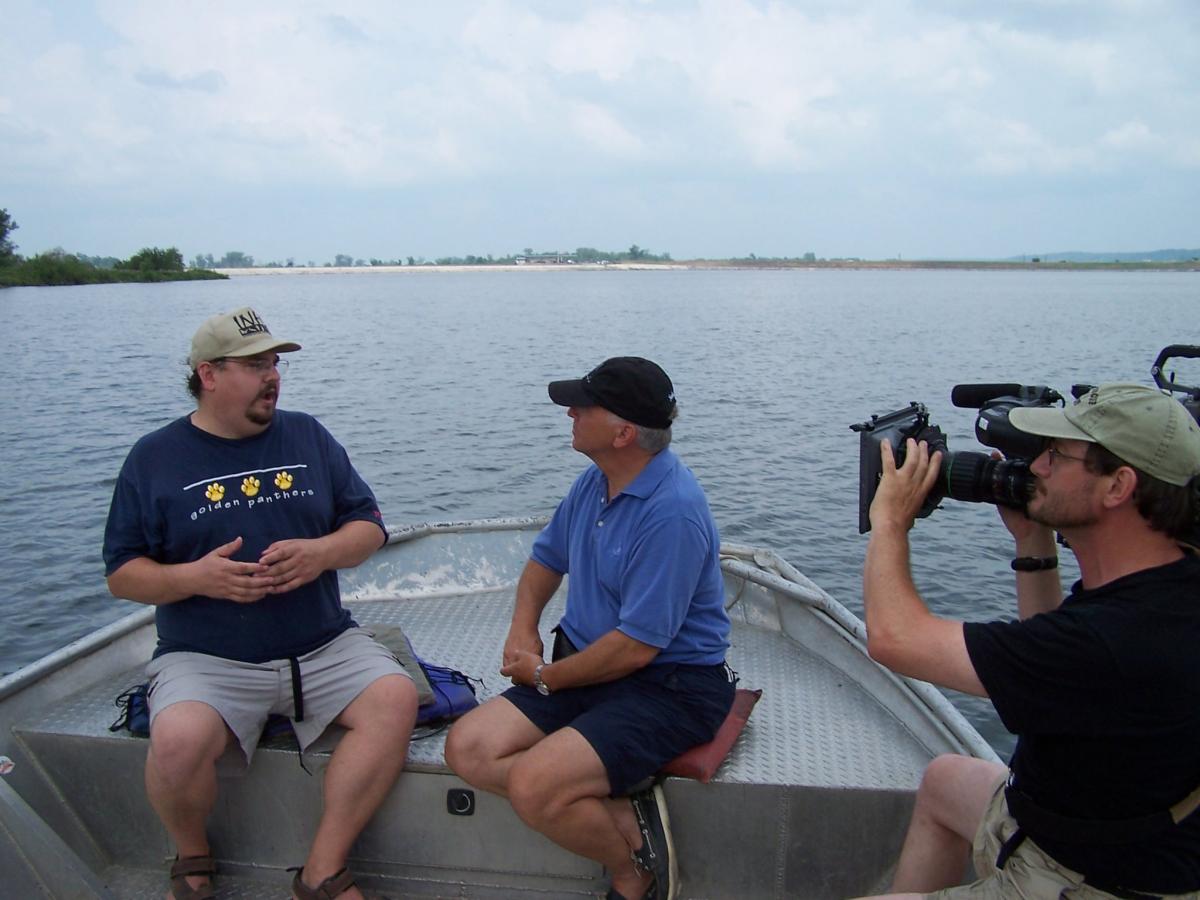Scientists researching the upper Mississippi and the Illinois River have the data needed to accurately identify problems, such as low fish populations, and are finding solutions, John Chick, director of the Great Rivers Field Station of the Illinois Natural History Survey, told NRT students in a virtual talk July 29, 2021.
“I don’t know how many times I have heard in different scientific meetings we are either pointing out a problem and we need to learn more, and they always say, ‘Unfortunately, we just don’t have the data.’ For this system, we have the data. We absolutely have the data!” Chick said.

Scientists have been studying the Illinois and upper Mississippi rivers since the 1890s, leading to successful restorations in the river system, and today, most of Chick’s studies focus on several varieties of Asian carp and their relationship to more desirable sport fish.
Of specific interest, Chick said, is the silver carp, which appeared in the upper Mississippi in the mid-1990s and turned up regularly in scientific samples by 2000.
The upper Mississippi has six reaches that Chick and other scientists monitor, and the three reaches farthest north do not have Asian carp yet, but the southernmost three do. The scientists analyzed 20 years of data to determine whether the increase in Asian carp, specifically the silver carp, could account for a decrease in sport fish populations.
“We wanted to challenge any relationship we would get between sport fish and silver carp abundance with other potential explanatory variables,” Chick said.
The scientists considered changes in water temperatures, suspended solids and flooding as other possible causes of the decrease in sport fish. They had observed warming trends in the area, with an accompanying increase in water temperatures and increased flooding. As would be expected, the water was cooler in the three upper reaches, where the Asian carp had not been detected, than in the three lower reaches. Flooding was more common in the lower reaches, and water clarity, affected by suspended solids, was better in the upper reaches.
When they put the data into a mixed-model analysis of variance, only silver carp turned out to be significant in having a negative effect on sport fish, Chick said.
“The suggested mechanism for this negative effect of silver carp on adult sport fishes is likely competition for zooplankton with the juvenile stages of sport fishes,” Chick said. “Silver carp feed on plankton, largely phytoplankton and some zooplankton as well. Most of our sports fish do not feed on that material as adults; most of them are feeding on macroinvertebrates [such as insects, crawfish, and grass shrimp] or other fish. So, if there is direct competition, it’s going to be happening at with silver carp and the juvenile stages of sport fishes.”

Scientists at state and federal agencies have been working with the commercial fishing industry to reduce Asian carp populations in the Illinois and Mississippi rivers and to prevent them from entering Lake Michigan.
“That’s really going well, and they’re harvesting thousands of pounds of silver carp almost daily,” he said.
Scientists installed an electric barrier in the canals closer to Lake Michigan, knocking the fish out so they float downstream again, but the fish recover and swim back up. Scientists have also considered deoxygenating water as a barrier.
“There’s still a lot of work looking at that, but I think really, the focus has changed to ‘let’s stop them at the upstream extant of their reproduction and abundance, and just harvest and harvest and try to knock their populations down that way,’” Chick said.
Fishers and farmers have also formed a partnership to reduce harm to waterways by farmers using technology to apply fertilizer more accurately, reducing quantities needed, and by using no-till farming.
“That’s a really good trend, and that means there is much less sediment escaping from farm fields and going into the waterways,” Chick said.
He told NRT students that the data scientists have on the upper Mississippi and Illinois rivers date to the 1890s when scientist Stephen Forbes studied the effect of pollution on fish in the Illinois River after the opening of the Chicago Sanitary and Ship Canal. Such scientific studies led to the Clean Water Act of 1972 and the Tunnel Reservoir Plan commissioned in the 1970s.
“The combination of these two things really allowed the Illinois River to become a functioning and diverse ecosystem again,” Chick said. “Now there are commercial fishers who go out and capture fish in the Illinois River and sell it to local businesses. It’s safe to eat most of the fish in the Illinois River again.”
For students interested in working in this scientific area, Chick suggested they meet with professors during their office hours, become a lab assistant, carry out special projects, and get experience in the field even as undergraduates.
“Any time you do that, that’s going to really boost your chances of getting hired for something else relative to someone who’s just coming out and really only has good grades and lots of classes on their record,” he said.
— Ronica Stromberg, NRT Program Coordinator


